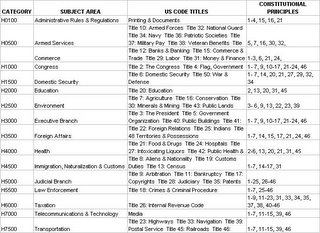A New Way Of Proposing Laws In Congress

There is a fundamental problem with the way our legislators operate. It seems that all they have to do to screw up the system is add an amendment to a bill, regardless of whether or not it is related to the original title and purpose of the bill, and then the bill must be reviewed in its entirety. This means that a single bill may end up in 10 or more committees before being brought to the floor, pork-barrel items can be tacked onto a bill, and partisan politics interfere with the fundamental principles delineated with the Constitution and the Bill of Rights.
Over the years we have seen bills on funding road projects pass through congress and have amendments regarding abortion attached to the original bill. We have seen essential laws ground to a halt because somewhere along the line an intolerable amendment was added just to play partisan politics, demonstrate political power, or obtain some level of pork. What in the world do road projects have to do with abortions? The answer, obviously is nothing. So why should a bill pass through our congress with such unrelated topics. The process only tangles us in red tape and burdens the system unnecessarily. There needs to be some process of preventing the proper process of passing laws from being perverted in this way. The framers wanted the process to be difficult and thoughtful, but not ridiculous or impossible.
As I was thinking about how the lack of rules skews the legislative process, I developed an idea that would require members of congress-both houses-to stick to the point and get on with making laws that adhere to Constitutional principles.
The first step in this process is to outline a set of categories that a proposed bill can fit. The bill cannot be designated for more than three categories. There will be a need to designated some sub-categories as well to allow for all issues to be directed to appropriate committees and keep the topic focused.
The second step is to assign each congressional committee a maximum of two categories over which it has oversight and control.
The third step is to assign the proposed bill to a maximum of five committees.
The fourth step is to only allow amendments that are in the same category(ies) and sub-categories originally assigned to the bill. Nothing that is outside of the topic of the bill-determined by the category and sub-category classification-can be attached to the bill. Each bill would also have a stated time limit that each committee may hold the bill without a floor vote to extend that time limit. If a committee fails to act on the bill, it is automatically sent to the floor in its present condition for a yea or nay vote.
The table above outlines, using the United States Code as a guide, one example of how this could be accomplished. The idea needs expansion and fleshing out, but it is a good start. The table lists sixteen general topic areas, each having an assigned code for that category/topic. There is room for this general code to be expanded into 500 sub-categories. The designation for a sub-category would be the general designation and a 3-digit add-on (e.g. H0500-001). Each house of congress would use the same codes except that the senate would use the letter designation S and the house would use H to demonstrate which house initiated the proposed bill. Take a look and offer some feedback.

0 Comments:
Post a Comment
<< Home